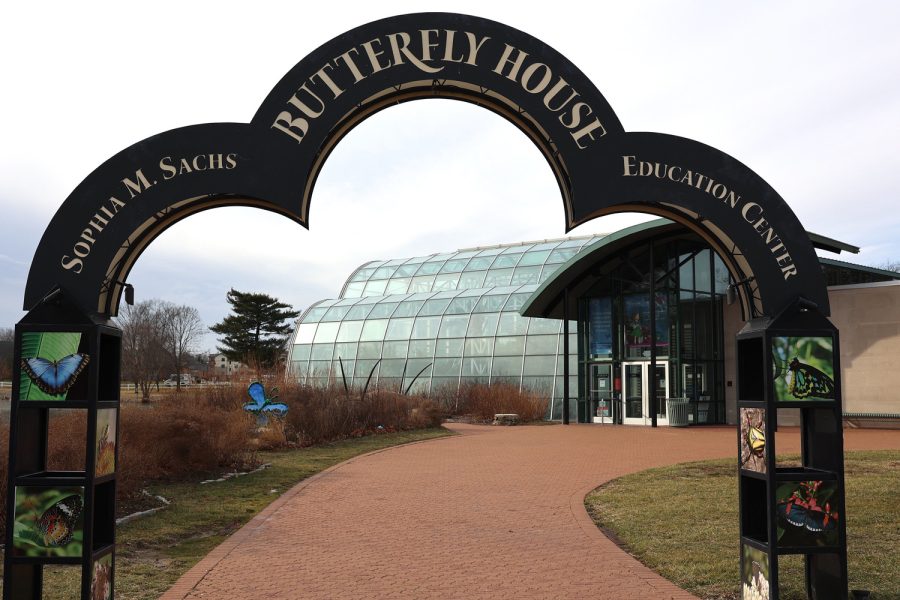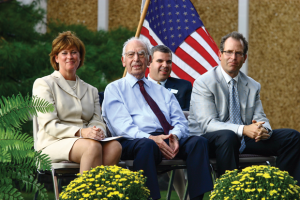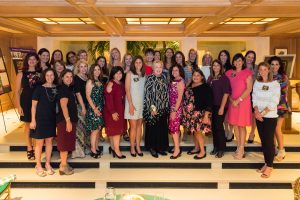The story behind the Sachs family’s contributions to the Missouri Botanical Garden
Published March 7, 2022
St. Louisans seeking an opportunity to better understand the environment and how we care for the natural world will find an excellent resource in the Missouri Botanical Garden. But visitors might not know the story of the philanthropic St. Louis Jewish family, the Sachs’, that is the namesake of two garden facilities.
The Stephen and Peter Sachs Museum sits on the eastern side of the garden along Tower Grove Avenue. It was designed by architect George Barrett and built in 1859, the year the garden opened. It was the original location of the garden’s library and herbarium. Age took its toll on the building, renovations were completed in May 2018 and it is one of the crown jewels of the garden complex.
Stephen and Peter Sachs were brothers and the sons of philanthropist Louis Sachs. However, neither Louis nor his sons lived to see the renovated museum. Louis initiated the lead gift to renovate the museum in 2011. He died during the fundraising phase, and his son Stephen took over the project for the family. Stephen died during the renovation. His brother Peter died in 2003.
ADVERTISEMENT
Louis Sachs helped fund another local landmark, the Sophia M. Sachs Butterfly House in Chesterfield. He initiated the lead gift to build and name the facility in honor of his mother-in-law.
“The Butterfly House is named for my mother, Sophie,” said Nancy Sachs, 90.
Louis Sachs was a garden trustee for more than a decade and a strong supporter of its development. He cared deeply about the institution, Nancy Sachs said.
“It is certainly a major part of St. Louis, and you support the things that you care about,” she said.
ADVERTISEMENT
While Sachs contributed to these institutions, he preferred that his name not be attached to them, according to his daughter Susan Sachs.
“He had the naming rights, but he didn’t like it to be discussed,” she said. “It was modesty. He was happy he could do the things he did, but any public recognition of them made him very uncomfortable.”
Louis Stanley Sachs was born Jan. 9, 1928. His father, Samuel, was a Lithuanian immigrant, and his grandfather, also named Louis, was a dry goods peddler who settled the family in Desloge, Mo. They eventually moved to St. Louis. Samuel earned a degree in electrical engineering from Washington University and formed the S.C. Sachs Co. (later Sachs Electric Co.). The firm’s customers included Sportsman’s Park, Busch Stadium II and the Gateway Arch.
Louis Sachs graduated from Clayton High School in 1945. Like his father, Samuel, he graduated from Washington University. He joined the Army in 1950 and served in the Korean War. Louis returned and became president of Sachs Electric. He later turned his attention to real estate development and set his sights on Chesterfield.
Louis Sachs also became active in philanthropy, contributing to the arts, the Jewish Community Center, Jewish Hospital and the St. Louis County Library; the Samuel C. Sachs Branch in Chesterfield is named for his father.
Botanical garden museums are uncommon
The Stephen and Peter Sachs Museum is unusual in part because so few botanical gardens have a dedicated facility of its kind, said Nezka Pfeifer, museum curator.
“It’s quite rare for a botanical garden to have a museum,” Pfeifer said. “Maybe about 10 gardens around the world have dedicated museums that tell stories about plants. It’s invaluable to have visitors able to come to one of the oldest botanical gardens in the country and learn about some significant plant families that touch all of us.
“I feel it sets a context for plants in our daily lives and gets people to pay attention so when they hear about some of the really interesting, unique conservation work that our Missouri Botanical Garden does in faraway places around the world, like Madagascar and the South Pacific, they understand the larger impact that plants play in our lives.”
The Sachs Museum is featuring a “Grafting the Grape” exhibition that explores American grapes used in winemaking, and how those grapes continue to produce wine in Missouri.
George Englemann, a German-born botanist and scientific adviser to Henry Shaw, a philanthropist and founder of the garden, was instrumental in studying and naming many native Missouri grapes. German immigrants who landed in Missouri discovered those native plants as well, and towns such as Hermann boast a number of popular wineries today.
Winemaking became a growing industry in the mid-1800s, and countries traded grape plants to develop better tasting wines. An unintended consequence of those trades was a hitchhiking insect, the Grape phylloxera, that landed in Europe on the root of an American grape plant. It nearly devastated the wine industry in France until botanists and vintners figured out the cause. To fix the problem, they turned to the ancient art of root grafting. That process is featured in the Sachs Museum.
Butterflies are early predictors of environmental stress
The Sophia M. Sachs Butterfly House in Faust Park is a major local destination for families. It’s no coincidence that Louis Sachs supported the concept, said Jennifer Mullix, director of the butterfly house.
“Louis Sachs was a real estate developer, but he also invested in the future of Chesterfield, and he knew what it was going to become,” Mullix said. “He knew what people in the community wanted and needed. It wasn’t just about buildings and houses.”
Mullix said the butterfly house is connected with the Missouri Botanical Garden in part because trees are host plants for butterflies.
“Monarch butterflies can’t lay their eggs on a rose bush,” she said. “The tulip poplar is a beautiful tree, but it’s also a host plant for butterflies. You can’t have flowers without butterflies, and you can’t have butterflies without plants. It’s a great symbiotic relationship.
“The earliest predictors that something is wrong in the environment are insects and creatures like butterflies, so they are very important. We are the advocate of teaching the public about the importance of invertebrates. Any animal without a backbone — we want to shed some light on them. When our founders started the house in the late ’90s, it was about displaying these beautiful species of butterflies, but we also educate people about the symbiotic relationship between butterflies and plants. As a division of the Missouri Botanical Garden, it’s very important to us to be a beautiful place people can escape to and an education environment.”
Mullix said part of the butterfly house’s educational mission is to illustrate that everyone can play a part in providing an environment hospitable to pollinators such as bees and butterflies.
“We teach that you shouldn’t be using pesticides in your backyard, and how you can plant pollinator gardens in your backyard or on your porch,” she said.
Even a small parsley plant destined as garnish or on a seder plate can attract some butterflies, she said.



















